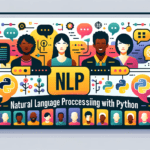In today’s tech-driven landscape, mobile applications have become the gateway to digital transformation, enabling businesses to connect with their audience in more personalized ways. When you embark on a mobile app development journey, two giants dominate the space: iOS and Android. While both platforms cater to a wide user base, the development process for each is distinct. Let’s delve deep into the nuances of developing for both platforms.
Understanding the Landscape
The Tech Titans: iOS vs. Android
-
iOS:
Apple’s brainchild, iOS, is renowned for its elegance, seamless user experience, and a consistent ecosystem. It’s a closed system, meaning Apple oversees every aspect, from hardware to the software. The result? A cohesive, fluid experience across all devices, be it iPhones, iPads, or iPod Touch.
-
Android:
The world of Android is vast and diverse. Being open-source, it provides manufacturers the flexibility to customize the OS as per their device specifications. This leads to a plethora of devices, from budget phones to premium flagships, all operating on Android.
Selecting the Right Development Tool
The Arsenal of a Developer
-
iOS:
Apple provides its integrated development environment (IDE), Xcode. With a suite of tools tailored for iOS development, from interface builders to a comprehensive code editor, Xcode is a one-stop-shop for all things iOS.
-
Android:
For Android, the spotlight is on Android Studio. This IDE, developed by Google, offers features like a rich code editor, a real-time profiler, and emulators for testing across device types.
Designing for the Platform
Crafting Aesthetic and Intuitive Interfaces
-
iOS:
Apple has always been a design-centric brand. Following the Human Interface Guidelines ensures that the app feels native to the iOS ecosystem. Emphasis is on minimalism, intuitive gestures, and depth effects like blurs and transparencies.
-
Android:
Android’s Material Design is a visual language. It champions bold colors, motion, and depth effects using shadows. The goal? Creating more tactile and engaging experiences.
Hardware and Software Integration
Optimizing for the Device Jungle
-
iOS:
Apple’s device lineup, though varied, is limited. Developers have the advantage of optimizing their apps for a few device sizes and specs. Yet, ensuring compatibility across different iOS versions is paramount.
-
Android:
Android developers face a herculean task due to device fragmentation. Different manufacturers, screen sizes, and resolutions mean that adaptive layouts are not just a luxury but a necessity.
Testing Your App
The Litmus Test for App Quality
-
iOS:
The iOS Simulator in Xcode offers a preliminary testing ground. It emulates various devices and orientations. However, always test on actual devices before deployment for real-world performance insights.
-
Android:
The Android Emulator simulates multiple devices. Yet, given Android’s vast device landscape, it’s vital to test on as many real devices as possible.
Monetizing Your App
Turning Pixels into Profit
-
iOS:
Apple’s audience is known for its spending capacity. Leveraging in-app purchases or adopting a freemium model can yield significant returns.
-
Android:
Ads dominate the Android monetization model due to its vast user base. Yet, the tide is turning, with in-app purchases gaining momentum, especially in gaming apps.
Deploying the App
Launching Your Digital Masterpiece
-
iOS:
The Apple App Store has stringent review guidelines. To ensure your app sees the light of day, strictly adhere to their rules and quality benchmarks.
-
Android:
Google Play Store is more lenient in terms of app approval. However, maintaining high-quality standards ensures better user reviews and rankings.
Post-launch Maintenance
The Journey Beyond the Launch
The launch is just the beginning. Both iOS and Android platforms frequently update their OS versions and introduce new devices. Staying updated with these changes and iterating your app accordingly ensures its longevity and relevance in the market.
Benefits of Mobile App Development for iOS and Android
Vast Market Reach
-
iOS:
With Apple’s expansive global footprint, apps developed for iOS can reach a vast audience spanning multiple countries and demographics.
-
Android:
Android, with its dominant market share, offers an even broader reach, especially in emerging markets and regions where cost-effective smartphones are prevalent.
High ROI
-
iOS:
Apple users typically exhibit higher purchasing power and willingness to spend on in-app purchases and premium apps, leading to potentially higher revenue for businesses and developers.
-
Android:
The sheer volume of Android users provides ample opportunities for monetization through ads, in-app purchases, and app sales.
Enhanced User Experience
-
iOS:
Apple’s strict design and development guidelines ensure a standardized and seamless user experience across all apps on its platform.
-
Android:
Google’s Material Design provides a consistent and modern UI/UX framework, ensuring apps are intuitive and user-friendly.
Flexibility and Customization
-
iOS:
Though iOS is a closed ecosystem, it offers a stable environment for app development, ensuring consistent performance across devices.
-
Android:
Being open-source, Android offers greater flexibility for customization, allowing developers to create diverse and unique app experiences.
Integration with Advanced Features
-
iOS:
iOS apps can seamlessly integrate with features specific to Apple devices, such as FaceID, Siri, and ARKit.
-
Android:
Android offers integration capabilities with a variety of hardware features, sensors, and Google services, including Google Assistant and Google ARCore.
High-Quality Standards
-
iOS:
Apple’s App Store has stringent review processes, ensuring that apps maintain a high quality standard.
-
Android:
While Google Play has a more lenient review process, it has mechanisms in place to ensure that apps meet specific quality and security standards.
Improved Customer Engagement
Apps on both platforms offer businesses a direct channel to engage with their customers, be it through notifications, loyalty programs, or in-app promotions.
Brand Recognition and Trust
- iOS: Having an app on the Apple App Store can enhance brand value given Apple’s premium positioning in the market.
- Android: A presence on the Google Play Store ensures visibility to a massive global audience, enhancing brand recognition.
Scalability
Both iOS and Android platforms are designed with scalability in mind, allowing developers to build upon existing apps, integrating new features and functionalities as the business grows.
Security
- iOS: Apple’s closed ecosystem, combined with its stringent app review processes, ensures a high level of security for apps and user data.
- Android: Google’s Play Protect, combined with regular security updates, offers a secure environment for apps and users.
In Summation
Developing for both iOS and Android is a thrilling yet challenging journey. It demands not only technical expertise but also an understanding of the unique nuances of each platform. With a focused approach, continuous learning, and a finger on the pulse of ever-evolving user needs, one can craft apps that stand out in the crowded app marketplaces. Embrace the challenges, revel in the learning, and happy coding!




